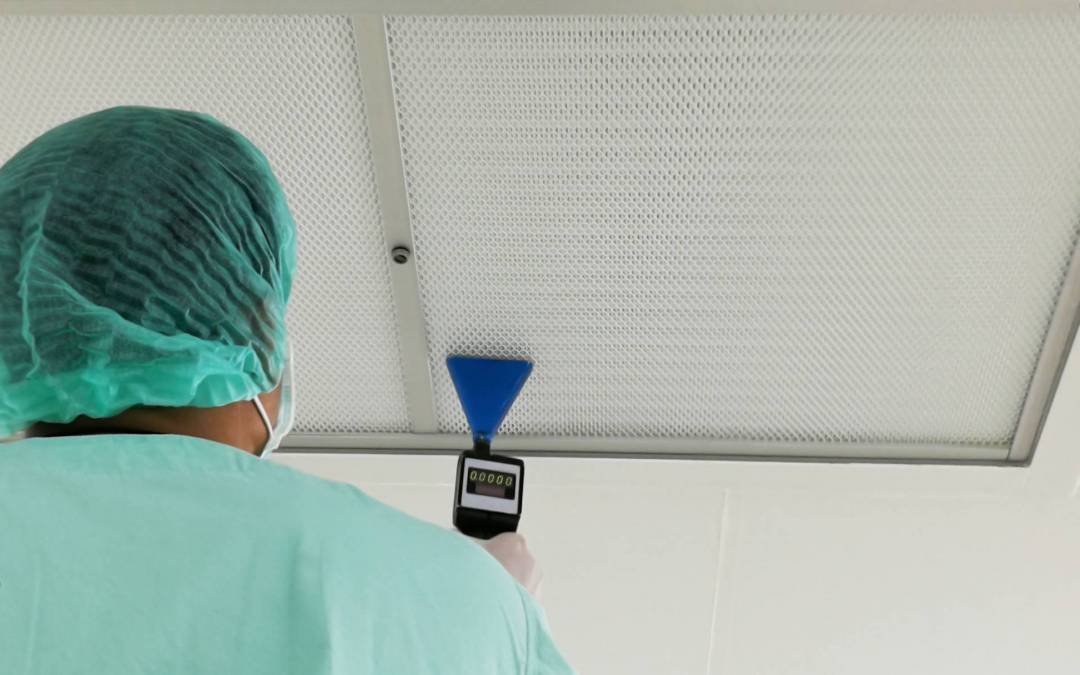If you look up the meaning of HEPA you will find several variations such as High-Efficiency Particulate Air or High-Efficiency Particulate Absorption or Arrestance.
Even though the precise terminology may change, you will be glad to know it is the same technical standard. DOP tests ensure HEPA filters meet the European standard, EN 1822: 2009.
The bottom line of this standard is that filters that meet the specification are able to successfully filter particulates in the air to an efficiency of 99.97%. That means particulates greater than 0.3 microns will be filtered from the air.
How small is that? Using a micron to millimeter converter you will see it is the same as 0.0003mm in thickness. In other words, not visible to the human eye. It is no surprise then, filters of this nature need regular testing and checks to make sure they continue to perform to specification.
In this article, you will learn everything you need to know about DOP tests.
Who Uses HEPA Filters?
These types of filters have a wide application. Their function is to remove very fine particulates from the air. For example, unwanted chemicals during a chemical reaction, or particulates that are dangerous to human health.
Common applications are in hospital operating theaters. Other uses include patient isolation rooms. They are also used in cleanrooms and in laboratories. Further applications are in the electronics and optical industries.
The use of these filters in such a wide range of equipment and the resulting contaminants removed, vary from harmful bacteria to hormones to asbestos and so forth, it is easy to see how important it is that the equipment is regularly tested.
DOP Tests – How Often is Regular?
The frequency of testing will depend on the application the filters are being used for as well as the physical location.
For example, if the output from the filter is indoors or near heating, ventilation and air conditioning systems it is wise to test between projects.
A general rule is after any maintenance work. For example, on the motor or the filters. Changing the filters should lead to testing the system again.
Whatever the configuration or location of the system, they should be tested as a minimum every 2 years. Country-specific guidelines may vary.
What Does DOP Mean?
It stands for ‘dispersed oil particulate.’ This is the substance used to create the particulate for testing the filters. The substance is then pressurized and released as a cloud into the air.
Traditionally, the DOP substance is oil based and Dioctyl Phthalate has been used. Concerns regarding the carcinogenic properties of this substance have prompted the use of other substances such as Poly Alpha Olefin. For this reason, you may see this test referred to as POA testing.
Essentially these tests are the same thing.
DOP Testing – What is Involved?
The liquid used for the testing is converted into an aerosol form and delivered to the airstream that is upstream from the filter. Downstream measurements are made using a photometer.
Photometers are an accurate way to measure light. They also enable the measurement of the concentration of particles in the air. Upstream and downstream measurements of the aerosol are compared so as to ascertain the penetration of the particulate through the filter.
It is important that whatever measurement devices are used that you follow very carefully the installation instructions.
DOP Testing – Quality Assurance Considerations
If you intend to hire someone to do this service, then you need to make sure that the equipment being used performs to specification, is well serviced and maintained. Supportive evidence should be available on request.
It is also valuable to check that the technicians carrying out these tests are suitably trained and appropriately qualified. Although the tests need not be lengthy, they do require the use of complex equipment which must be used in the correct way.
DOP Testing – Don’t Forget Dead Spots
Checking upstream and downstream particulate density is a vital part of DOP testing. However, it is possible that rooms can develop a build-up of harmful particulates in certain parts of the room.
These spots are sometimes referred to as dead spots because the flow of air in these locations is at a minimum. That means that the filters do not get to do their work by drawing the air through the filtration system.
This emphasizes the importance of using a company that is experienced in the field and will also asses the airflow in the room to make sure the whole room has sufficient flow and the filter system can actually do what it was designed to do.
HEPA Testing – Self Checks
You do not have to wait for a scheduled test before you check the integrity of your HEPA filter system. There are visual checks that you can perform on a regular basis that may give you an early warning that the system needs testing by a professional.
For example, you should check the filters for any cracks or holes. If you spot any signs of damage or wear then immediately request for the system to be tested.
When Is Your Next DOP Test?
In this article, you have read the basics of DOP tests and how to carry out them out. It requires specialized equipment and qualified professionals with experience.
Do not put DOP testing off. Make sure you have a regular program of testing in place. Request an early test if there are any causes for concern. In the meantime check out some other products you will find helpful in this industry.

